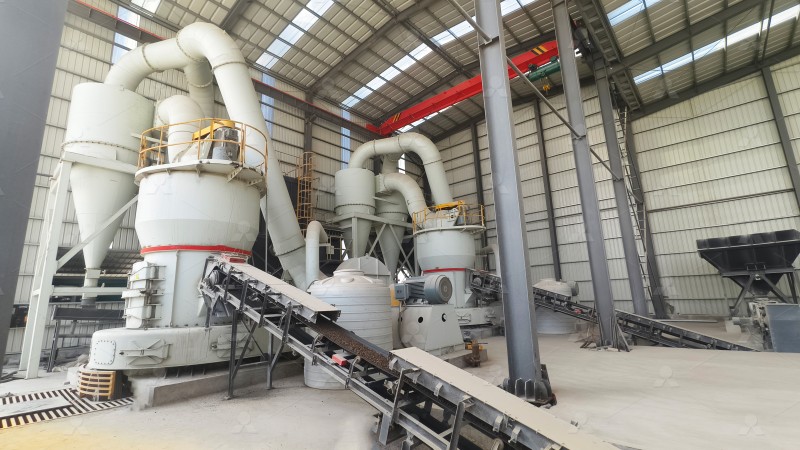Desulfurization Process with Vertical Roller Mill: Efficient Limestone Grinding for Flue Gas Treatment
Desulfurization Process with Vertical Roller Mill: Efficient Limestone Grinding for Flue Gas Treatment
In today’s environmentally conscious industrial landscape, flue gas desulfurization (FGD) has become a critical process for power plants and industrial facilities worldwide. The heart of any wet FGD system lies in the preparation of high-quality limestone slurry, where the grinding technology employed directly impacts system efficiency, operational costs, and environmental compliance.
The Critical Role of Limestone Grinding in FGD Systems
Effective flue gas treatment depends on precisely ground limestone that reacts efficiently with sulfur dioxide. The particle size distribution, purity, and consistency of the limestone powder significantly influence the absorption rate and overall desulfurization efficiency. Traditional grinding methods often fall short in meeting the stringent requirements of modern FGD systems, leading to higher chemical consumption, increased waste production, and reduced system reliability.
Vertical roller mills have emerged as the preferred technology for limestone preparation in FGD applications due to their superior grinding efficiency, lower energy consumption, and excellent product quality control. These mills utilize the principle of material bed comminution, where multiple grinding rollers exert pressure on a bed of material spread over a rotating grinding table.
Advanced Grinding Technology for Superior Performance
For operations requiring exceptional fineness and consistency in limestone preparation, our MW Ultrafine Grinding Mill represents a technological breakthrough. With an input size capability of 0-20 mm and capacity ranging from 0.5-25 tph, this advanced mill system delivers precisely controlled limestone powder ideal for FGD applications.
The MW Ultrafine Grinding Mill incorporates several innovative features that make it particularly suitable for desulfurization processes:
- Higher Yielding with Lower Energy Consumption: The newly designed grinding curves of grinding roller and grinding ring enhance grinding efficiency significantly. With the same fineness and power, production capacity is 40% higher than jet grinding mills and twice as large as ball grinding mills, while system energy consumption is only 30% of jet grinding mills.
- Adjustable Fineness Between 325-2500 Meshes: The cage-type powder selector adopts German technology, effectively increasing powder separation precision. The product fineness can be precisely adjusted to meet specific FGD system requirements.
- Eco-friendly Operation: Equipped with an efficient pulse dust collector, the entire milling system operates without dust pollution. Silencer and noise elimination rooms reduce operational noise, ensuring compliance with environmental standards.
Operational Advantages in FGD Applications
The unique design of vertical roller mills provides distinct benefits for limestone grinding in flue gas treatment systems. The material retention time within the grinding zone is significantly shorter compared to traditional ball mills, reducing the risk of over-grinding and minimizing energy waste. Additionally, the integrated drying capability allows for processing limestone with varying moisture content without requiring separate drying equipment.
For larger-scale FGD operations, our LUM Ultrafine Vertical Grinding Mill offers additional advantages with its input size of 0-10 mm and capacity of 5-18 tph. This mill integrates ultrafine powder grinding, grading, and transporting in a single system, incorporating the latest grinding roller technology and German powder separating technology.
System Integration and Environmental Compliance
Modern vertical roller mills are designed with complete system integration in mind. From material feeding and grinding to product collection and dust control, these systems operate as cohesive units that minimize operational complexity while maximizing reliability. The enclosed design and negative pressure operation prevent dust emissions, addressing both worker safety and environmental concerns.

The digital control systems incorporated in advanced grinding mills allow for precise adjustment of operational parameters, enabling operators to quickly respond to changes in limestone characteristics or FGD system requirements. This level of control ensures consistent product quality while optimizing energy consumption.
Conclusion
As environmental regulations continue to tighten worldwide, the importance of efficient and reliable limestone grinding for flue gas desulfurization cannot be overstated. Vertical roller mill technology, particularly advanced systems like the MW Ultrafine Grinding Mill, provides the performance, efficiency, and environmental compatibility required for modern FGD applications. By selecting appropriate grinding technology and optimizing operational parameters, industrial facilities can achieve superior desulfurization performance while controlling operational costs and maintaining regulatory compliance.
Frequently Asked Questions
What fineness of limestone powder is typically required for FGD applications?
Most wet FGD systems require limestone powder with 90-95% passing through 325 mesh (44 μm), though specific requirements may vary based on system design and operating conditions.
How does the energy consumption of vertical roller mills compare to traditional ball mills for limestone grinding?
Vertical roller mills typically consume 30-50% less energy than ball mills for the same grinding duty, making them significantly more cost-effective for FGD applications.
Can vertical roller mills handle limestone with high moisture content?
Yes, most modern vertical roller mills incorporate integrated drying systems that can handle limestone with moisture content up to 15-20% without requiring separate drying equipment.
What maintenance advantages do vertical roller mills offer for continuous FGD operations?
Vertical roller mills feature designs that allow easy access to grinding components, with some models offering reversible structures that enable quick roller replacement without extensive disassembly, minimizing downtime.
How does the MW Ultrafine Grinding Mill ensure consistent product quality for FGD systems?
The MW Mill utilizes advanced cage-type powder selectors with German technology that provide precise particle size control, while the digital processing of core components ensures high machining precision and reliable operation.
